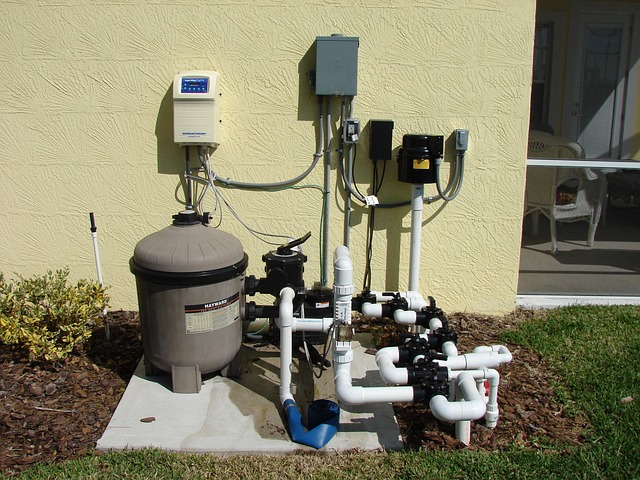Comparing Membrane, Carbon, and UV Treatment Methods
This article outlines the core differences between membrane, carbon, and UV water-treatment approaches. It highlights what each method removes, practical installation and maintenance considerations, and factors such as flowrate, certification, and sustainability to help readers evaluate options for household and small-scale use.

Water treatment choices influence what contaminants are reduced, how systems are installed and maintained, and what ongoing costs look like. This article compares membrane, carbon, and UV methods across removal capability, operational efficiency, installation and maintenance needs, certification, and environmental trade-offs. This article is for informational purposes only and should not be considered medical advice. Please consult a qualified healthcare professional for personalized guidance and treatment.
How does membrane filtration work?
Membrane filtration uses a physical barrier to remove particles from water. Common membrane types include microfiltration, ultrafiltration, nanofiltration, and reverse osmosis (RO). Membranes excel at trapping sediment, bacteria, and many microplastics depending on pore size; RO systems can also reduce dissolved solids. Filtration performance depends on membrane pore size, flowrate, and pressure; lower flowrates and higher pressure often improve removal efficiency but can increase energy or waste water. Membrane systems may generate a concentrate stream that requires disposal and typically need periodic cartridge or membrane replacement to maintain performance.
What does carbon filtration remove?
Carbon filters—often in cartridge form—use adsorption to capture organic compounds and chlorine byproducts that affect taste and odor. Granular activated carbon (GAC) and carbon block cartridges differ in contact time and physical removal of sediment. Carbon is effective against chlorine and many organic contaminants, and it can reduce some fraction of microplastics associated with organic material or larger particulates when used with a sediment prefilter. Carbon does not reliably inactivate microbes or remove dissolved salts, so it is commonly paired with membrane or UV systems. Cartridge life and replacement frequency depend on incoming water quality and flowrate.
How does UV treatment inactivate microbes?
UV systems expose water to ultraviolet light to disrupt microbial DNA, preventing reproduction. UV does not remove particles, chlorine, or chemicals; it is primarily a disinfection step effective against bacteria, viruses, and protozoa when properly sized and certified. Flowrate and lamp intensity determine UV dose: higher flowrates reduce contact time and may lower effectiveness, so correct sizing and certification are important. UV systems are often installed after filtration steps that remove sediment and turbidity so that light penetration is not obstructed. Regular lamp replacement and occasional cleaning of sleeves are required to maintain efficiency.
Installation, cartridge changes, and maintenance
Installation complexity varies: point-of-use carbon pitchers need no plumbing, under-sink membrane systems typically require a trained installer for connections and drain lines, and whole-house or inline UV units require plumbing fittings and electrical supply. Cartridge changes (sediment and carbon) are common maintenance tasks and should follow manufacturer schedules tied to flowrate and contaminant load. Membrane replacement intervals can range from one to several years; UV lamps commonly require annual replacement. Routine maintenance affects long-term efficiency and certification compliance; record keeping and following installation guides help reduce performance loss over time.
Performance, certification, and sustainability trade-offs
Certified systems (NSF, ANSI, or equivalent regional standards) provide verifiable claims about contaminant reduction. Efficiency metrics include water recovery for membranes, energy use for UV lamps, and adsorption capacity for carbon. Sustainability considerations include waste streams from RO brine, landfill impact of used cartridges, and energy consumption for continuous UV systems. Selecting systems with replaceable and recyclable components, low standby energy use, and appropriate sizing for the household reduces environmental impact while preserving performance.
Real-world pricing and product comparisons
Costs vary by system type, capacity, and installation complexity. Basic carbon cartridges or pitcher filters are low-cost with moderate recurring cartridge expenses. Under-sink membrane systems (including RO) add installation and occasional membrane replacement costs. UV units involve upfront equipment and lamp replacement plus possible electrical hookup. Below is a representative comparison of well-known products and providers; costs are approximate and will vary by region and retailer.
| Product/Service Name | Provider | Key Features | Cost Estimation |
|---|---|---|---|
| RCC7 Reverse Osmosis System | iSpring | 5-stage RO with sediment and carbon prefilters; under-sink installation; membrane for dissolved solids | $150–$300 (equipment); $100–$300 installation if professional |
| Longlast+ Replacement Filter | Brita | Carbon block cartridge for pitcher or dispenser; reduces chlorine taste and odor; cartridge-based | $20–$40 per cartridge (varies by pack size) |
| VH410 UV System | VIQUA (Trojan) | Point-of-entry UV disinfection; designed for whole-house flowrates; requires prefiltration | $400–$900 (equipment); installation varies |
| Everpure Carbon/Sediment Cartridges | Pentair Everpure | Commercial-grade cartridges for taste, chlorine, and particulate control | $40–$200 per cartridge depending on capacity |
Prices, rates, or cost estimates mentioned in this article are based on the latest available information but may change over time. Independent research is advised before making financial decisions.
Conclusion Membrane, carbon, and UV methods serve different roles: membranes provide particle and dissolved-solids removal, carbon targets chlorine and organics that affect taste and odor, and UV focuses on disinfection. Effective water-treatment setups often combine methods—sediment prefiltration, carbon polishing, membrane removal, and UV disinfection—to address a range of contaminants while balancing flowrate, maintenance, certification, and sustainability. Match system choice to your water quality needs, local services, and certification requirements for reliable performance.




